The development of Stackfield 3 began with the clearly defined goal of solving the problems associated with team collaboration. In the beginning, we even called out a precise number in one of our blog posts: we were talking about 7 points that we wanted to improve in the future versions of Stackfield.
On the last weekend, it was finally the time to carry out the update to Stackfield 3. In regards to the new functionalities, we are pleased to be able to present which problems were addressed by the update:
No clear overview and too many places to check in order to know what needs to be done today. Solution: The new Dashboard
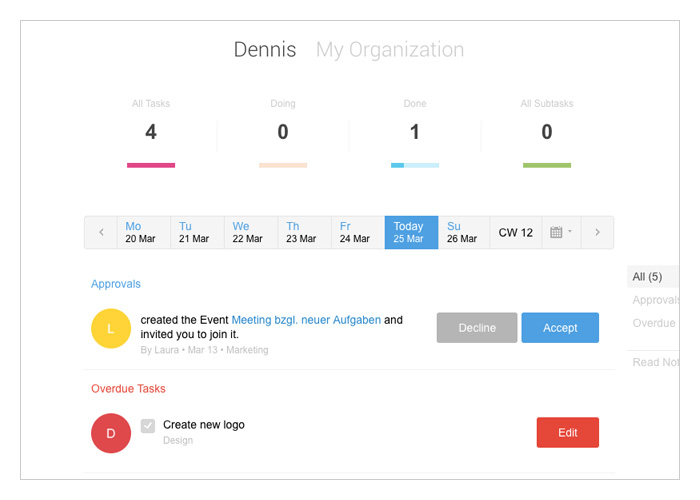
The majority of the tools, including Stackfield before the update, offer a range of functions and therefore even more places in which the information is presented. In this way, the overview was almost always missing, although open tasks were visible in the Dashboard, but at the same time the calendar and the notifications had to be kept in sight. Eliminating all these access points and offering a view of the workload for the day was quite a tedious process.
We have solved this situation with the update through a complete overhaul of the Dashboard. After taking into consideration the feedback we received from our users, which specified that what needs to be done in a particular day should be visible at a glance, we decided on the following approach: all notifications, events and tasks will now be displayed in the Dashboard in a dedicated list for each day – in this way, the events of the day can be observed and worked on step by step.
If, for example, a person is assigned with a task for approval, the respective task will appear directly in the Dashboard, from where it can also be handled. This is also the case if an event is scheduled for the day: it will also be displayed in the Dashboard, along with the other upcoming tasks. It is now enough to take a quick look at the Dashboard in order to see what’s going on in a day. This eliminates the need to search for the important upcoming activities, with the work being clearly structured.
https://www.stackfield.com/help/using-the-dashboard-2019
Too many breaks in collaboration. Solution: Notes on images, documents instead of posts.
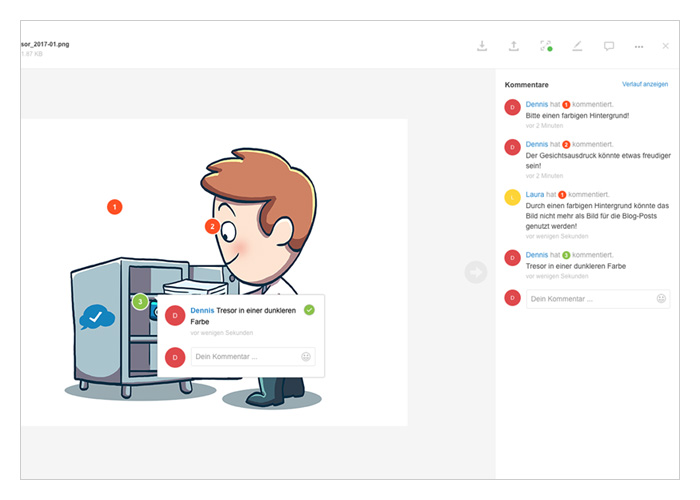
The collaboration has always been complicated due to the fractioning of the functions and the missing logging of changes, which meant that no one really understood what changes have been done within a task by other persons. For this reason, we combined the individual functions even more. Annotations can be directly placed on individual spots of pictures, which means that comments will no longer be left hanging in the comments field, but will actually be linked to the picture itself.
Completed annotations can be checked as soon as they are completed / have been corrected accordingly. Additionally, we have redesigned the posts, since it was never clear what they are actually used for. To be more precise, two modules have replaced the former posts: on one hand we now have Discussions and on the other Documents. The latter offers much more functions than the posts – with an allocated status and more room for text, the collaboration, the exchange of important information and the creation of documents is now easier than ever.
https://www.stackfield.com/help/working-with-documents-2021
https://www.stackfield.com/help/working-with-files-2015
Team communication. Solution: Discussions
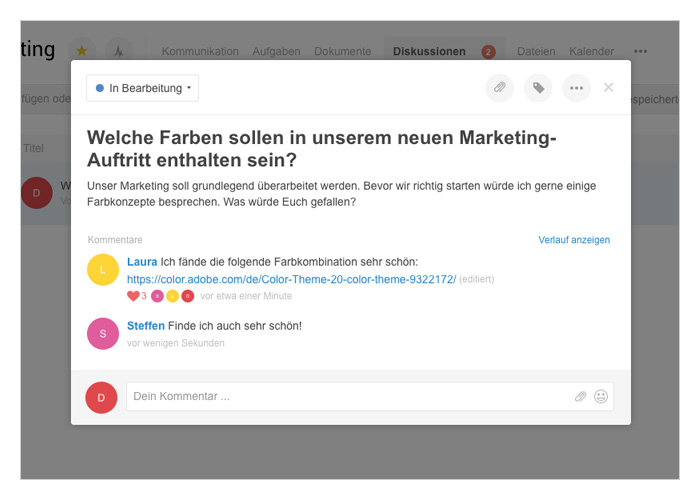
The chat is suitable for the quick exchange of short-lived information, but as soon as important information is exchanged and decisions are taken, the chat becomes completely unsuitable. When a large number of messages is received, the user often must either search or scroll for a long time through the messages. For using the search functionality a keyword is required and even then it can still be difficult to find the information. Also, the scrolling can quickly become a frustrating activity.
Therefore, the Discussions replace the possibility to comment on chat messages. As soon as a reply to a message is added, a new discussion is created, including a status (Open, Postponed and Closed) and a neat comments area. Additionally, files can be attached directly to discussions and labels can be used to categorize discussions. Hereby it’s easier to keep an overview of all open discussions and the contained information.
https://www.stackfield.com/help/working-with-discussions-2023
Lack of control with rising number of users and workspaces are involved. Solution: Teams, workflows and improved user rights
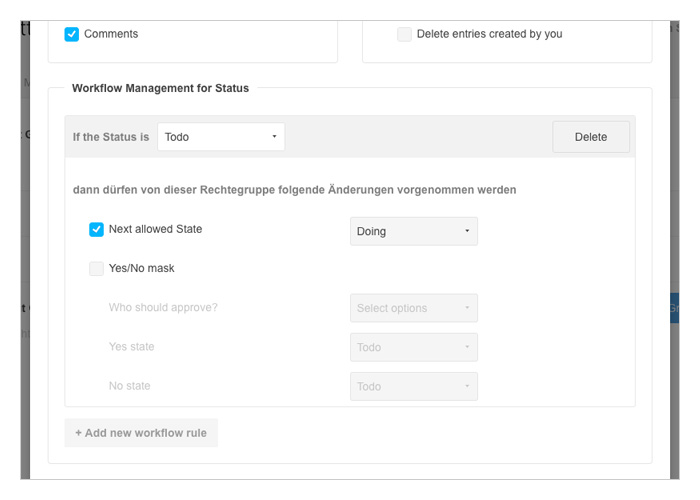
With the increasing number of users, everything becomes more confusing: Who was added to which room? What individual operations can a user perform? Who can edit a file? For these problems we have created a new organizational structure, called Teams. Teams can be created from the settings of the organization and users can be allocated to them. These teams can then be added to rooms and the users from the teams are automatically given access to the rooms.
Afterwards, the new rights grouping functionality can be used inside rooms, which allows for a finer granularity determination of access rights for each module, being also directly applicable to whole teams. The new workflows are also linked to the new right groups. This can be used for defining which right groups can make changes and in which status and also to whom a task should be passed after processing.
https://www.stackfield.com/help/working-with-teams-2017
https://www.stackfield.com/help/using-right-groups-within-rooms-2018
Did my colleagues actually take the necessary steps? Solution: Approvals
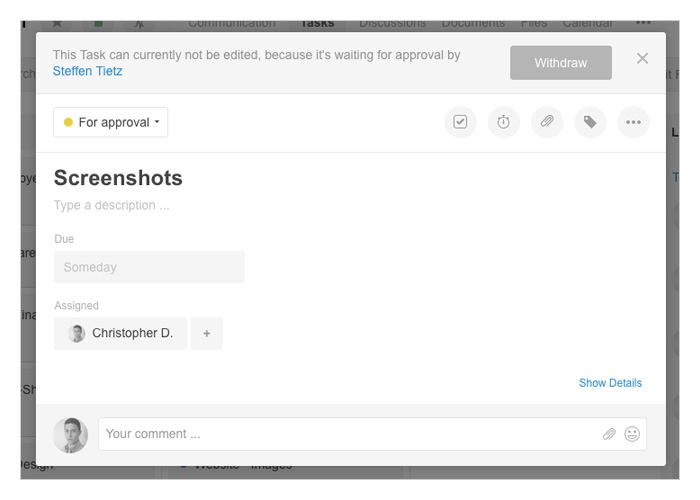
Oftentimes, colleagues had to be reminded to give feedback on a certain task. Or the other way around, one waits in vain for a task to be forwarded for approval when the task was already falsely marked as “Done”. If a task is now changed to the “For Approval” status, a user must be selected to whom the task will be assigned and must then approve the work.
If this action is taken, the new assigned user receives a notification in the Dashboard and can carry on with the approval of the task. At the same time, workflows can be used to define that certain right groups cannot mark a task as completed, but are required to seek approval first.
Lack of acceptance within the company due to a foreclosed tool. Solution: External Users, E-Mail Module (coming soon)
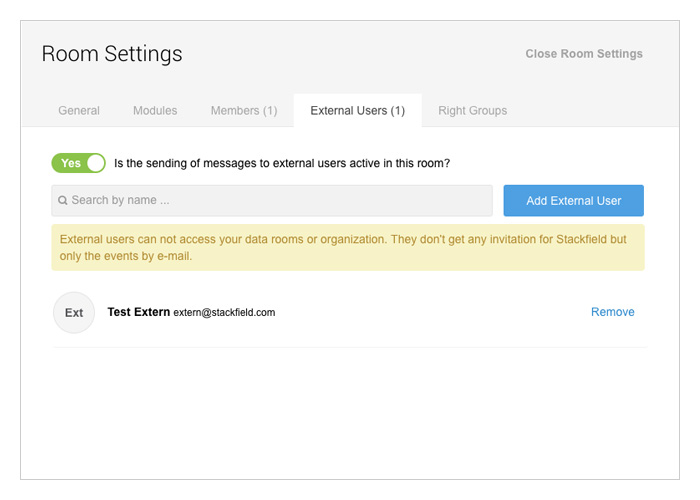
The success of a tool depends above all on the employees’ acceptance rate. In its turn, the acceptance depends on how well the tool is integrated into the everyday workflow. As long as a tool simplifies daily processes and is not perceived as a hurdle, the acceptance rate is increased.
With the possibility of adding external persons to Stackfield and sending them invites to events, without having to leave Stackfield, the usability of the platform is increased mostly because those external persons and customers are not forced to create a Stackfield account in order to have access to this information. Similarly, the soon-to-be-available email integration will eliminate annoying copy & paste work.
https://www.stackfield.com/help/working-with-events-2022
Difficult access to data. Solution: Mobile and Desktop Apps (coming soon)
A tool that contains the essential information of the organization must be accessible at all times. With the browser version of Stackfield, we have laid the foundation for accessibility, since no separate programs have to be installed and thus no additional effort is required for its operation. The mobile and desktop apps will further simplify access:
For example, a desktop app can be started directly when the computer is rebooted, which means that the effort to open a website is no longer necessary (and one can no longer forget to go online). The apps are the next big focus on our roadmap and all our efforts are now going in that direction.
Besides these 7 problems, we have also addressed and improved many existing functions. The following functions have been added or revised:
Time Tracking
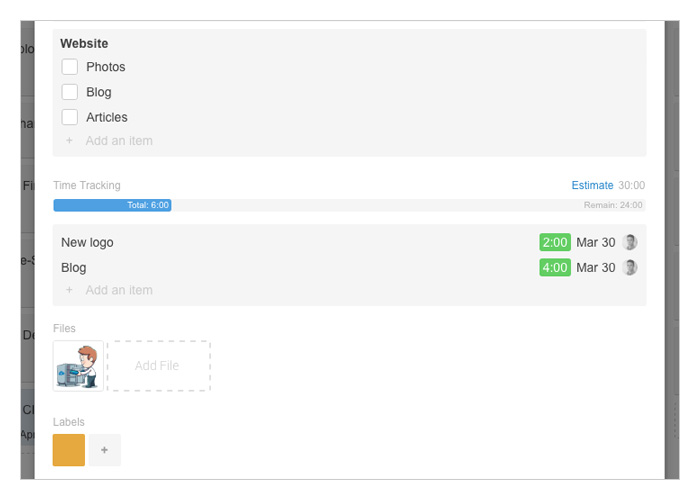
Integrated directly into the tasks, the required workload can now be stored and evaluated with a few clicks.
https://www.stackfield.com/help/how-to-use-time-tracking-2014
New sub-tasks
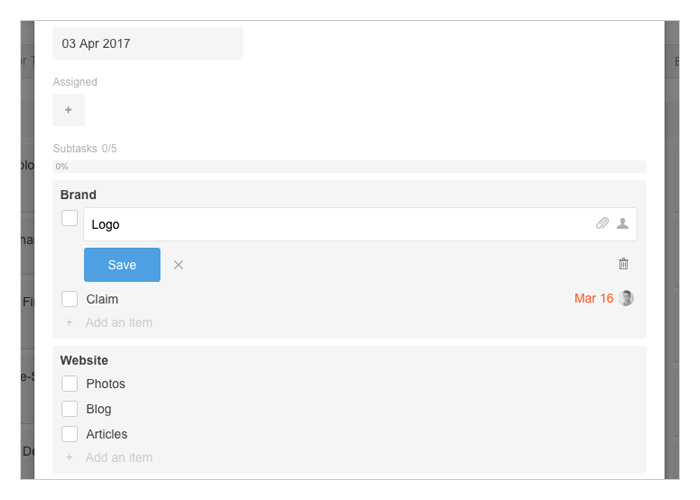
Thanks to the reworked sub-tasks (formerly known as checklists), several lists can be created, persons can be assigned to sub-tasks and even files can be attached to sub-tasks. Additionally, a due date can be set for each sub-task.
Like button for messages and comments
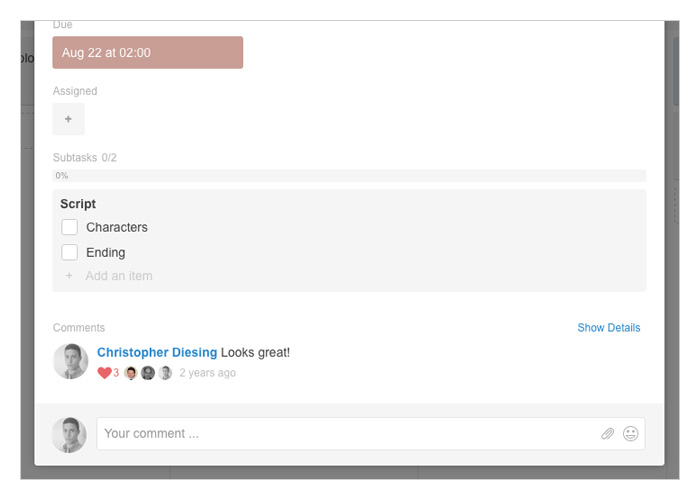
A good comment has been made or one would like to express consent in relation to a comment? A like button is now available for this. Messages and comments can be liked by clicking on the “heart” icon located under the message/comment. Besides the number of likes, the users who liked the entry are also shown.
Location in Events
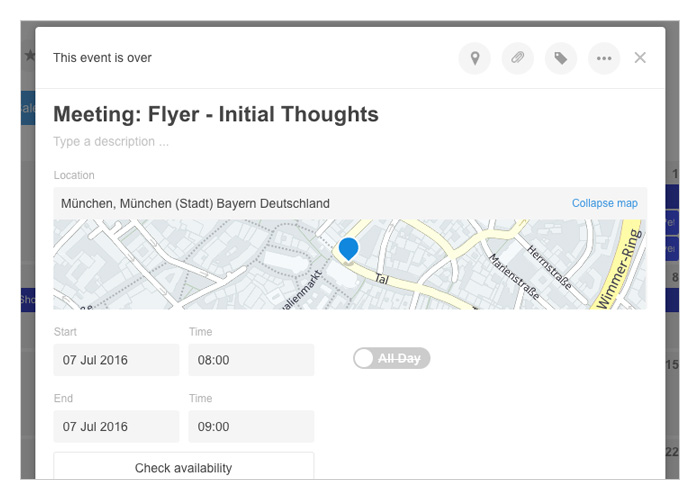
Whether in a cafe around the corner or in the conference room: every event takes place at a certain place, which one should not look for long in the description. For this purpose, the "Location" function has been added, which can be inserted via the "Location" icon found in the upper right corner of an event.
After the first three letters have been typed, location suggestions appear and they can be selected directly. Once a location has been selected and the event has been saved, the position of the location can be displayed on a map the next time the event is opened by clicking on "Extend map".
Revised filters
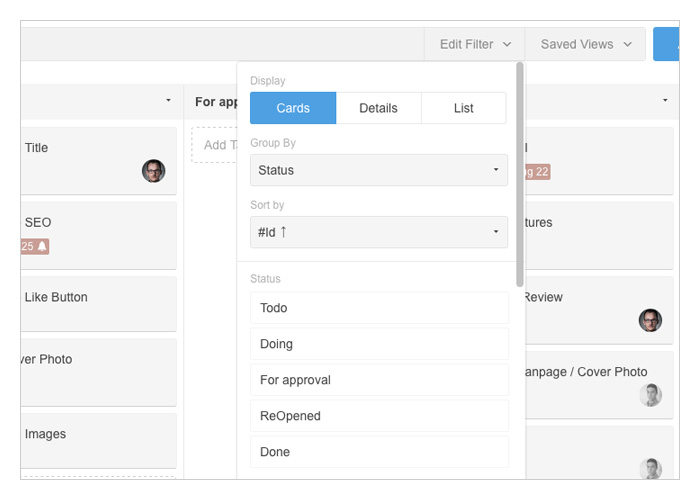
The filter has been simplified and structured in a clearer way. All options are now ordered in a list, which also makes it easier to see which parameters are active.
Tagging of people
The tagging of persons in messages and comments was also optimized. While it was only possible to tag people by their first name (if a last name was given), the full name, as well as the first name, can now be tagged. Once a person has been tagged with the full name by using the @ sign, simply press backspace, which will delete the surname. If this is not desired, the message can be simply sent with the full name.
Print and export
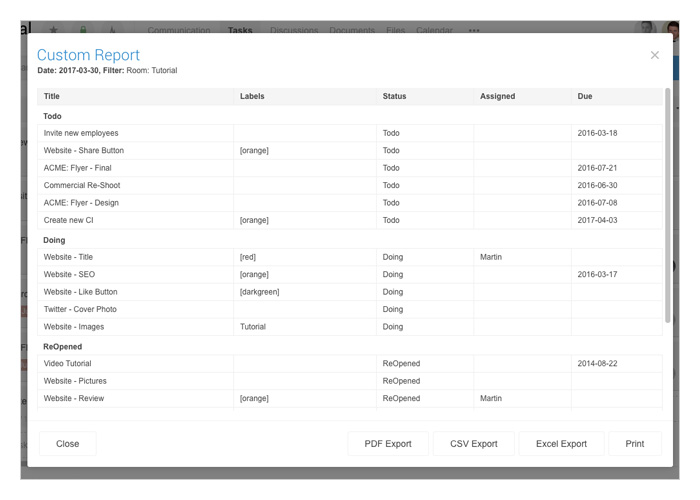
With the revision of the export function, new print options are now available: the active view can now be printed directly from all modules. Alternatively, it can be exported as CSV, Excel or PDF files. In addition to the results, the export also contains a list of the active filter options.
High resolution and larger emoji
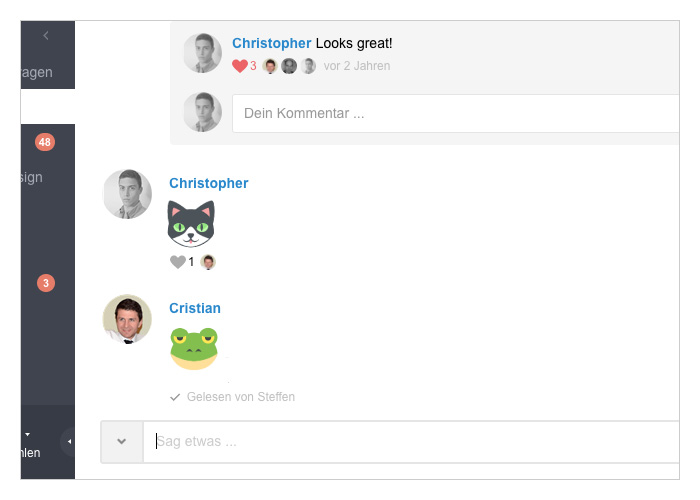
Emojis have been given a more prominent role through the update. If only one emoji is sent as response, this is displayed significantly larger. As soon as two emojis or text are contained in the message, the emojis are displayed in normal size - but still larger than before.
New search
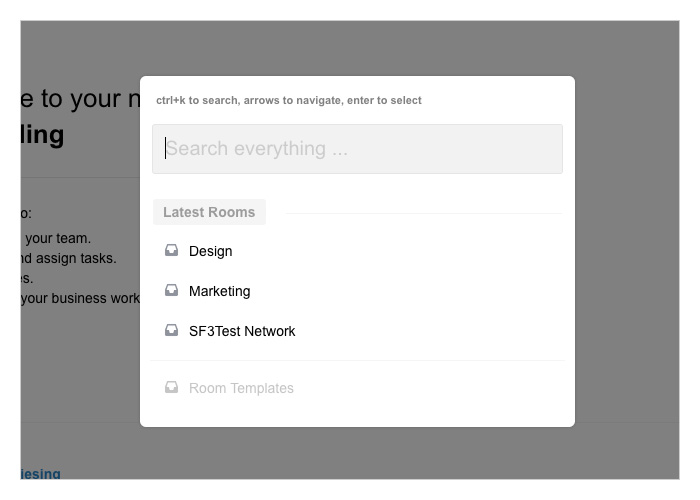
The new search is displayed in the middle of the screen and includes an access option for the room templates. As before, the search can be called using the key combination "ctrl" + "k" (Windows) / "ctrl" + "k" (macOS) and a quick change of the room can be carried out by entering the room name.
Improved history/ change history
The history stores now all states of all fields, for example it is possible to track which information has been changed in the description of a task.
Optimization of file management
It is now possible to download several files at once or all files belonging to an element. In addition, navigation within folders is now facilitated by "Breadcrumbs", which display the current path. These can also be used to remove files from folders by drag and drop. All files can also be attached to descriptions, sub-tasks, existing elements (only new elements in the previous version), etc.
What will happen next?
We will focus on the perfection of these 7 points - but this does not mean that nothing new will be added. We are already planning on improvements such as video telephony and screen sharing, but at the same time we are open to all proposals and look forward to your feedback:
Which functions would you like to see added? Contact us at support@stackfield.com – we are excited to receive all your proposals!